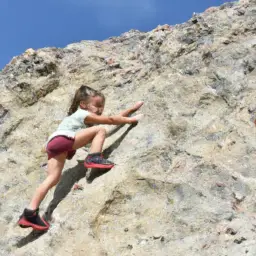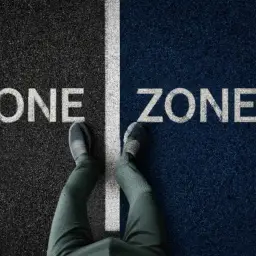Do you want your team to be resilient and persevere through challenges? Building grit in your team can help them do just that. Grit is the ability to persist in the face of obstacles and setbacks, and it’s an essential trait for success in any field.
In this article, we’ll explore the 5 pillars of building grit in teams, and how you can apply them to create a more resilient and effective team.
The first pillar is purpose. When your team has a clear sense of purpose, they’re more likely to stay motivated and committed to the task at hand. This can be achieved by setting clear goals and communicating the impact of the team’s work.
The second pillar, autonomy, allows team members to have control over their work and decision-making processes. This fosters a sense of ownership and responsibility, which can increase motivation and accountability.
The third pillar, mastery, involves providing opportunities for team members to develop their skills and expertise. This can enhance confidence and competence, and increase the team’s ability to tackle challenges.
The fourth pillar, connection, focuses on building strong relationships and a sense of belonging within the team. This can increase trust, support, and collaboration, which are essential for overcoming obstacles.
Finally, the fifth pillar, mindset, involves cultivating a growth mindset and embracing challenges as opportunities for learning and growth. By prioritizing these 5 pillars, you can help your team develop the grit and resilience they need to succeed.
Key Takeaways
- The 5 pillars of building grit in teams are purpose, autonomy, mastery, connection, and mindset.
- Purpose involves setting clear goals and communicating the impact of the team’s work.
- Autonomy allows team members to have control over their work and decision-making processes.
- Mindset involves cultivating a growth mindset and embracing challenges as opportunities for learning and growth.
The Importance of Grit in Team Building
You can’t build a strong team without grit – it’s the glue that holds everyone together and helps you overcome any obstacle.
The importance of grit in team building cannot be overstated. When team members are faced with challenges and setbacks, it’s easy to become discouraged and give up. But with grit, teams can develop resilience and push through even the toughest of situations.
Developing resilience in teams is crucial for success. It helps team members persevere through difficult times and maintain a positive attitude, even when the going gets tough.
Without grit, teams may crumble under pressure and fail to achieve their goals. But with grit, teams can work together, support each other, and overcome any obstacle that comes their way.
So if you want to build a strong and successful team, make sure you prioritize developing grit and resilience in your team members.
Pillar 1: Purpose
To build grit in your team, you need to start with a clear sense of purpose.
You can do this by understanding your organization’s mission, defining your team’s purpose, and aligning that purpose with your goals.
By doing this, you’ll create a sense of direction and motivation that will help your team persevere through challenges and achieve success.
Understanding the Organization’s Mission
By truly grasping and embracing the organization’s mission, you and your team can develop a sense of purpose and direction that fuels your grit and determination. The importance of clarity in understanding the mission cannot be overstated.
When you have a clear understanding of what the organization is striving to achieve, you and your team can align your goals and efforts with that mission. This gives you a sense of direction and purpose that drives you forward, even in the face of challenges and setbacks.
Defining values is another crucial aspect of understanding the organization’s mission. When the values that guide the organization are clear and well-defined, you and your team can use them as a compass to guide your actions and decisions. This helps you to stay on track and make choices that align with the organization’s mission and values, even when faced with difficult or ambiguous situations.
By understanding and embracing the mission and values of your organization, you and your team can develop a powerful sense of purpose that fuels your grit and determination, enabling you to tackle even the toughest challenges with confidence and resilience.
Defining the Team’s Purpose
As a member of the team, it’s important to have a clear understanding of what the team’s purpose is and how it aligns with the organization’s mission and values. Defining purpose: why it matters, how to do it. When the team’s purpose is clearly defined, it helps to create a sense of direction and focus. It allows team members to understand what they are working towards and why their contributions matter. This clarity also helps to avoid confusion and misalignment within the team.
To define the team’s purpose, start by understanding the organization’s mission and values. These provide a foundation for the team’s purpose and should be incorporated into it. Then, involve all team members in the process of defining the purpose. This creates buy-in and allows for the incorporation of individual passions into the team purpose. Finally, write down the purpose and communicate it clearly to all team members. This helps to ensure that everyone is on the same page and working towards the same goal. Incorporating individual passions into team purpose can also help to increase motivation and engagement among team members.
Aligning Purpose with Goals
Aligning your team’s purpose with your goals is crucial for achieving success and creating a sense of fulfillment in your work. To do this, you need to set clear and measurable goals that align with your team’s overall purpose. Here are some goal-setting techniques you can use:
-
Use SMART goals: Make sure your goals are specific, measurable, achievable, relevant, and time-bound. This will help you and your team stay focused and motivated.
-
Break down big goals into smaller ones: This will make the goals seem more achievable and less overwhelming. Set milestones along the way to track progress and celebrate small wins.
-
Involve your team in the goal-setting process: This will give them a sense of ownership and motivation to achieve the goals.
Finding motivation is also key to aligning purpose with goals. Make sure your team understands why the goals are important and how they contribute to the overall purpose. Communicate regularly, provide feedback and recognition, and celebrate successes along the way.
With clear goals and motivated team members, you can achieve great things.
Pillar 2: Autonomy
Giving teams autonomy fosters grit by allowing them to take ownership of their work and make decisions that align with their values and goals. When team members have a say in how they approach tasks and projects, they become more invested in the outcome. This investment drives them to work harder and persist through challenges, which is a key characteristic of grit.
Autonomy also develops trust and fosters accountability within teams. By giving teams the freedom to make decisions, leaders demonstrate that they trust their abilities to make sound choices. This trust builds a strong foundation for accountability because team members feel responsible for their actions and the impact they have on the team’s success. The following table illustrates how autonomy, trust, and accountability are interconnected:
| Autonomy | Trust | Accountability |
|---|---|---|
| Allows teams to make their own decisions | Demonstrates trust in team members’ abilities | Builds a sense of responsibility in team members |
| Empowers team members to take ownership of their work | Establishes a strong foundation for teamwork | Encourages team members to take ownership of their actions |
| Fosters creativity and innovation | Promotes open communication | Encourages team members to learn from their mistakes |
Giving teams autonomy is crucial for building grit in teams. It empowers team members to take ownership of their work, fosters trust, and promotes accountability. Ultimately, these factors help teams overcome challenges and achieve their goals.
Pillar 3: Mastery
In order to build grit in your team, you need to focus on the third pillar: Mastery.
This means providing opportunities for skill development, encouraging continuous learning, and celebrating achievements.
By doing so, you can create a culture of growth and improvement that will help your team persevere through challenges and achieve their goals.
Providing Opportunities for Skill Development
You can boost your team’s grit by offering chances for them to sharpen their skills. Skill development opportunities are essential in building expertise, which can help your team overcome challenges and obstacles.
Here are three ways to provide opportunities for skill development:
-
Encourage cross-training: Cross-training allows your team members to learn new skills and gain knowledge in different areas. It can also help them understand how their work contributes to the overall success of the team. Encourage your team members to learn from each other and share their expertise.
-
Provide training and development resources: Invest in training programs, courses, and workshops that can help your team members build new skills and enhance their existing ones. Give them access to online resources, books, and tools that can help them develop their skills outside of work.
-
Assign challenging projects: Assigning challenging projects can help your team members step out of their comfort zones and develop new skills. It can also give them a sense of accomplishment and boost their confidence. Make sure to provide support and guidance as they take on new challenges.
Providing opportunities for skill development can help your team members become more resilient and adaptable. By investing in your team’s growth, you’re also investing in the success of your team and organization.
Encouraging Continuous Learning
By fostering a culture of continuous learning, team members can stay up-to-date with the latest industry trends and technologies. This can enhance their problem-solving skills and make them more valuable contributors to the team. Continuous learning strategies can help team members develop a growth mindset, which is essential for building grit in teams.
Encouraging team members to take courses, attend conferences, and read books related to their field can help them expand their knowledge and gain new perspectives on their work. Fostering a growth mindset also involves providing opportunities for team members to learn from their mistakes and failures. Encouraging team members to reflect on their experiences and identify areas for improvement can help them develop resilience and perseverance.
By embracing a growth mindset and continuously seeking opportunities for learning and growth, team members can build the resilience and determination necessary to overcome challenges and achieve shared goals.
Celebrating Achievements
Celebrating achievements is like adding fuel to a fire, igniting a sense of pride and motivation in the team. It’s important to recognize the hard work and dedication of team members and celebrate their successes.
When employees feel valued and appreciated, they’re more likely to be engaged and committed to their work. This recognition also fosters a positive culture where team members feel supported and encouraged to continue striving for excellence.
Celebrating achievements can take many forms, from public recognition in team meetings to private notes of congratulations. It’s important to tailor the recognition to individual team members and their preferences.
Some may appreciate a public shout-out, while others may prefer a one-on-one conversation. By taking the time to celebrate achievements, teams can build a culture of support and appreciation that fosters grit and resilience.
Pillar 4: Connection
When it comes to building grit in teams, one important pillar is connection. This means creating strong relationships among team members, encouraging collaboration and communication, and creating a supportive environment.
By fostering these key points, you can help your team build resilience and overcome challenges together. So, make sure to prioritize connection in your team-building efforts!
Building Strong Relationships among Team Members
You can strengthen your team’s performance by fostering strong relationships among team members through open communication and mutual respect. Building trust is crucial in creating a cohesive team. When team members trust one another, they’re more willing to share ideas, collaborate, and take risks without fear of judgment or criticism.
To build trust, team members should strive to be reliable, honest, and transparent with each other. This means following through on commitments, admitting mistakes, and sharing information openly.
Fostering empathy is also essential in building strong relationships among team members. Empathy allows team members to understand each other’s perspectives and experiences, which can lead to better communication and collaboration. By actively listening to each other and acknowledging each other’s feelings, team members can create a supportive and positive work environment.
This can improve overall team morale and lead to increased productivity and success. By prioritizing trust and empathy, you can create a team that’s not only highly skilled but also highly connected.
Encouraging Collaboration and Communication
To promote collaboration and communication within your team, it’s important to encourage open dialogue and active listening. Collaborative problem solving is an effective way to encourage teamwork. This involves bringing together team members with diverse skillsets and perspectives to solve a problem together. By working together, team members can come up with more innovative solutions than they would on their own.
It’s important to create an environment where team members feel comfortable sharing their ideas and perspectives. Effective communication strategies are also key to encouraging collaboration and communication. This includes setting clear expectations for communication, providing regular feedback, and using tools like team meetings and project management software to keep everyone on the same page.
Encouraging active listening is also important. This means actively engaging with what others are saying and seeking to understand their perspective. By promoting collaboration and communication, you can build a strong team that is better equipped to tackle challenges and achieve its goals.
Creating a Supportive Environment
Creating a supportive environment involves fostering a culture of empathy and understanding among team members, where individuals feel safe to express themselves without fear of judgment or criticism. Supportive leadership plays a crucial role in creating such an environment.
Leaders need to listen actively to their team members, show empathy, and provide emotional support. They need to encourage team members to take risks and learn from their mistakes.
Fostering trust is another essential aspect of creating a supportive environment. Trust is the foundation of any successful team, and it is built through open and honest communication. Leaders need to establish clear expectations and goals, and then provide their team members with the necessary resources and support to achieve them.
When team members trust each other and their leader, they are more likely to take risks, collaborate, and work towards a common goal. A supportive environment not only helps individuals develop grit, but it also leads to improved team performance and overall success.
Pillar 5: Mindset
Mindset is crucial to developing grit in teams. Developing resilience and a growth mindset are key components of this pillar.
Resilience means being able to bounce back from setbacks, failures, and challenges. It’s about not giving up when things get tough and continuing to push forward towards your goals.
A growth mindset is the belief that you can improve and develop your abilities through hard work, practice, and dedication. It’s about embracing challenges as opportunities to learn and grow, rather than seeing them as threats or obstacles.
When it comes to building grit in teams, a growth mindset is particularly important. Teams that believe they can improve and develop their skills are more likely to persevere through challenges and setbacks. They see failures as opportunities to learn and improve, rather than as evidence of their limitations.
This mindset also encourages collaboration and a willingness to take risks, which are essential for innovation and growth. By fostering a growth mindset in your team, you can help them become more resilient, adaptable, and successful in achieving their goals.
Frequently Asked Questions
What are some common obstacles that teams face when trying to develop grit?
When it comes to developing grit in teams, you may encounter various obstacles that can hinder progress. Some common hurdles that you might face include lack of motivation, fear of failure, and a negative mindset.
Overcoming these obstacles requires perseverance and a willingness to push through even when things get tough. It’s important to remember that building grit takes time and effort, and setbacks are a natural part of the process.
By staying focused on your goals and maintaining a positive attitude, you can overcome these obstacles and develop the resilience and perseverance needed to succeed as a team.
How can leaders ensure that each team member is aligned with the team’s purpose?
To ensure that each team member is aligned with the team’s purpose, it’s crucial for leaders to prioritize communication.
Regularly checking in with your team and asking for feedback can help you determine if everyone is on the same page. You can also measure alignment within a team by setting clear goals and monitoring progress.
If everyone is working towards the same objective and understands their role in achieving it, then you know your team is aligned.
Additionally, hosting team-building activities and encouraging open dialogue can help foster a sense of unity and shared purpose. Ultimately, when everyone on your team understands and believes in the team’s mission, you’ll be better equipped to overcome obstacles and build grit together.
How can autonomy be balanced with accountability within a team?
To balance autonomy and accountability within your team, you need to focus on team dynamics and communication.
Encourage team members to take ownership of their work, but also set clear expectations for what needs to be accomplished and how it will be evaluated.
Regular check-ins and feedback sessions will ensure that everyone is on the same page and that progress is being made.
It’s important to foster a culture of trust and respect, where team members feel comfortable speaking up when they need help or when something isn’t working.
By balancing autonomy and accountability in this way, you can create a high-performing team that’s motivated, engaged, and capable of achieving its goals.
What strategies can be used to help team members achieve mastery in their respective roles?
To help team members achieve mastery in their respective roles, you can encourage practice-based learning. This means giving your team members opportunities to consistently practice and improve their skills.
You can also promote a growth mindset, where team members see challenges and failures as opportunities to learn and grow. This can involve providing constructive feedback and creating a culture where mistakes are seen as part of the learning process.
By focusing on practice and growth, you can help your team members build mastery and become more effective in their roles.
How can a team foster a strong sense of connection and collaboration, especially when working remotely?
To foster a strong sense of connection and collaboration in a remote team, you can implement virtual team building activities that encourage interaction and communication.
You can also use remote collaboration techniques such as video conferencing, instant messaging, and project management tools to keep everyone connected and informed.
Encourage team members to share their ideas and perspectives, and make sure everyone has the opportunity to contribute to team discussions.
Building trust and relationships is key to successful remote collaboration, so make sure to create opportunities for team members to connect on a personal level as well.
By using these techniques, you can create a strong, connected team that can achieve great things together, even when working from different locations.
Conclusion
So there you have it – the 5 pillars of building grit in teams.
By focusing on purpose, autonomy, mastery, connection, and mindset, you can create a team that is resilient and capable of overcoming obstacles together.
Remember, building grit takes time and effort, but the payoff is worth it.
Not only will your team be able to handle challenges more effectively, but they’ll also develop a sense of unity and purpose that can drive them towards success.
So take the time to cultivate these pillars within your team, and watch as they grow stronger and more resilient with each passing day.








































































































